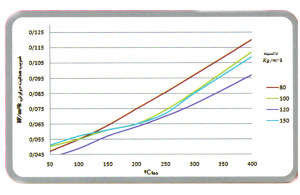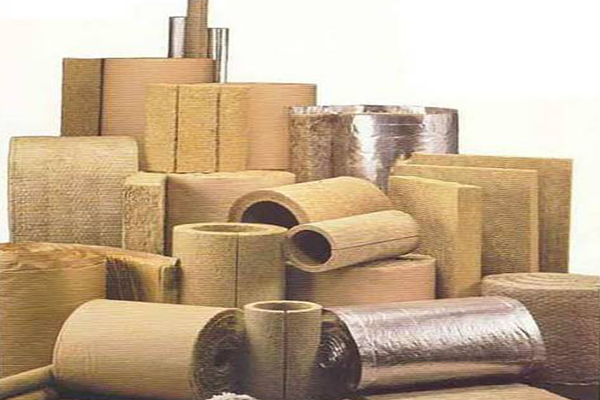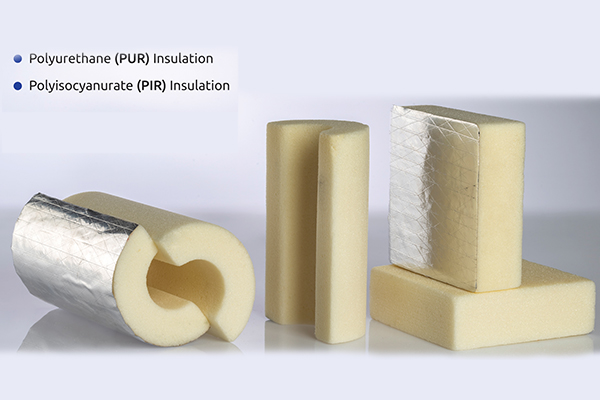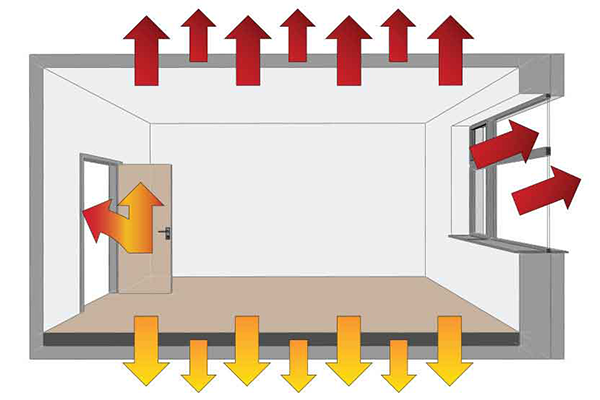Thermal insulation – Introduction
Introduction of Hear Transfer:
Heat energy: a Thermodynamic system may enjoy different types of energy. Heat energy is a part of the total internal energy of a thermodynamic system, and is tangible thorough the system’s temperature. When heat energy is transferred, by any means,that is called heat transfer. Heat transfer is the exchange of energy in a single system or between systems which have different temperature. Heat transfer is classified into various mechanisms:
– thermal conduction
– thermal convection
– thermal radiation
All three mechanisms may happen simultaneously in one system. Notably, there is a forth mechanism of heat transfer, that is, mass transfer. In particular, if the place of a hot object changes, normally its heat energy also transfers. However, in the area of insulation, this mechanism is not applicable nor useful, it doesn’t receive any attention. In addition, in the area of transformation mechanisms, heat energy might surface but it is not followed in heat transfer. The reason behind heat transfer inside a system or between different systems is the difference of temperature, or in another word, is the difference between the levels of heat energy. As a rule, heat transfers from a higher level of energy (higher temperature) to a lower level of energy (lower temperature) until thermal equilibrium is reached(the second law of thermodynamic).
Definitions:
Insulator:
Insulator is a material which can reduce or stop the transfer rate of mass or energy between two spaces. For instance, thermal insulators considerably reduce the transformation rate of heat (Thermal energy). Thermal insulator, sound insulator (soundproof), fire insulator, and humid insulation are major insulations.
Conduction:
Conduction is the transfer of heat between substances that are in direct contact with each other. It can happen between any two substances which both are in direct contact and have different temperature. The better the conductor, the more rapidly heat will transfer. The rate of heat transfer by conduction, between two substances, is related to their material, theirheat transfer rate, and also their temperature difference.
Convection:
Convection is the transfer of heat from one place to another by the movement of fluids. Convection is usually the dominant form of heat transfer in liquids and gases. Moreover, air is known as the principal means heat transformation by convection. However, in convention warm air always transfers towards cold air.

Heat transfer coefficient – Thermal conductivity:
Thermal conductivity (k) is the property of a material to conduct heat. It is defined as the quantity of heat transmitted through a unit thickness in a direction normal to a surface of unit area, due to a unit temperature gradient under steady state conditions. Heat transfer occurs at a higher rate across materials of high thermal conductivity than across materials of low thermal conductivity. Consequently, materials of low thermal conductivity are used as thermal insulation. the unit of Thermal conductivity in the metric system is W/(m.oK) and in British unit is Btu/hft oF. Thermal conductivity is shown by k.
Different insulation’s Thermal conductivity depends on the difference of temperature between their layers, their density, and their life. On balance, as temperature rises, Thermal conductivity also increases, and therefore the performance of insulation falls. As well as that, the decrease of an insulation density and increase of its life causes the increase of Thermal conductivity.
Estimation of the quantity of lost or absorbed heat
In the case of one-dimensional steady-state Rate of heat flow inside an insulation can be calculated by Fourier relation:
Q=-K.A. Dt/dx
Q .Heat Transfer flow rate (j/hr)
A .The area in which heat flow(m2)
K .Thermal Conductivity (j/hr.m.ok)
Dt/dx .Temperature gradient along the thickness
For Flat surfaces the above relation can be reformulated:
Q=K.A. (T1-T2) /X
X .Insulation Thickness (m)
T1 .The warmer temperatures
T2 .The colder temperatures
For tubes’ surfaces the above relation is like:
Q=k.A2. (T1-T2) /R2.Ln R2/R1
R1 .Incircle radius the pipe insulation (m)
R2 .Outer radius of pipe insulation (m)
A2 .External area of pipe insulation (m2)
When heat reaches, by means of Convection, to the outer surface of an insulator, the heat conduction’s mechanisms change to Convection and Radiation.Normally, it is assumed that all these mechanisms act simultaneously Therefore, a combined ratio from both mechanisms for a surface must be devised.
Hs=hc+hr
Hs .Combined heat transfer coefficient
Hc .Convection heat transfer coefficient
Hr .Radiation heat transfer coefficient
With the assumption that Radiation occurs at the ambient temperature, quantity of heat flow from surface is:
Q=hS.A(Tsurf-Tamb)
Tsurf .Outer surface temperature of the insulation
Tamb .Ambient temperature
The heat radiation’s Transfer coefficient can be estimated by:
Hr=ϵ.σ. (Tsurf4-Tamb4) /(Tsurf-Tamb)
ϵ .Emission coefficient of the surface
σ .Boltzmann constant factor





